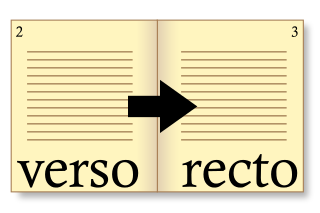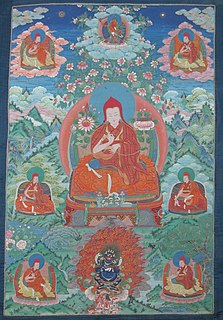Related Research Articles
In computing and telecommunication, a control character or non-printing character (NPC) is a code point in a character set, that does not represent a written symbol. They are used as in-band signaling to cause effects other than the addition of a symbol to the text. All other characters are mainly printing, printable, or graphic characters, except perhaps for the "space" character.
A diacritic is a glyph added to a letter or to a basic glyph. The term derives from the Ancient Greek διακριτικός, from διακρίνω. The word diacritic is a noun, though it is sometimes used in an attributive sense, whereas diacritical is only an adjective. Some diacritics, such as the acute ( ◌́ ) and grave ( ◌̀ ), are often called accents. Diacritics may appear above or below a letter or in some other position such as within the letter or between two letters.

Unicode, formally The Unicode Standard, is an information technology standard for the consistent encoding, representation, and handling of text expressed in most of the world's writing systems. The standard, which is maintained by the Unicode Consortium, defines 144,697 characters covering 159 modern and historic scripts, as well as symbols, emoji, and non-visual control and formatting codes.

The Tibetic languages form a well-defined group of languages descended from Old Tibetan. According to Tournadre (2014), there are 50 languages, which split into over 200 dialects or could be group into 8 dialect continua. It is spoken in the Tibetan Plateau and in the Himalayas in Baltistan, Ladakh, Nepal, Sikkim, Bhutan, Assam and Arunachal Pradesh. Classical Tibetan is the major literary language, particularly for its use in Buddhist literature.

The Tibetan script is a segmental writing system (abugida) of Indic origin used to write certain Tibetic languages, including Tibetan, Dzongkha, Sikkimese, Ladakhi, Jirel and Balti. It has also been used for some non-Tibetic languages in close cultural contact with Tibet, such as Thakali. The printed form is called uchen script while the hand-written cursive form used in everyday writing is called umê script. This writing system is used across the Himalayas, and Tibet.

The Soyombo script is an abugida developed by the monk and scholar Zanabazar in 1686 to write Mongolian. It can also be used to write Tibetan and Sanskrit.

The Tibetan Buddhist canon is a loosely defined list of sacred texts recognized by various sects of Tibetan Buddhism. In addition to sutrayana texts from Early Buddhist and Mahayana sources, the Tibetan canon includes tantric texts. The Tibetan Canon underwent a final compilation in the 14th century by Buton Rinchen Drub (1290–1364).

Wylie transliteration is a method for transliterating Tibetan script using only the letters available on a typical English-language typewriter. The system is named for the American scholar Turrell V. Wylie, who created the system and published it in a 1959 Harvard Journal of Asiatic Studies article. It has subsequently become a standard transliteration scheme in Tibetan studies, especially in the United States.

Recto is the "right" or "front" side and verso is the "left" or "back" side when text is written or printed on a leaf of paper in a bound item such as a codex, book, broadsheet, or pamphlet.
Terma are various forms of hidden teachings that are key to Vajrayana and Tibetan Buddhist and Bon spiritual traditions. In the Vajrayana Nyingma school tradition, two lineages occur: an oral kama lineage and a revealed terma lineage. Tradition holds that terma teachings were originally esoterically hidden by eighth-century Vajrayana masters Padmasambhava and Yeshe Tsogyal, to be discovered at auspicious times by treasure revealers known as tertöns. As such, terma represent a tradition of continuous revelation in Vajrayana and Tibetan Buddhism.

The ʼPhags-pa script is an alphabet designed by the Tibetan monk and State Preceptor Drogön Chögyal Phagpa for Kublai Khan, the founder of the Yuan dynasty, as a unified script for the written languages within the Yuan. The actual use of this script was limited to about a hundred years during the Mongol-led Yuan dynasty, and it fell out of use with the advent of the Ming dynasty.

Nyingma is the oldest of the four major schools of Tibetan Buddhism. It is also often referred to as Ngangyur, "order of the ancient translations". The Nyingma school is founded on the first lineages and translations of Buddhist scriptures from Sanskrit into Tibetan in the eighth century, during the reign of King Trisong Detsen.
Rgya Gram Shad is a character in the Tibetan character set. The character is a punctuation mark, an elaborate form of danda, used to signify the endings of paragraphs in Tibetan Buddhist texts.
The SASM/GNC/SRC romanization of Tibetan, commonly known as Tibetan pinyin or ZWPY, is the official transcription system for the Tibetan language for personal names and place names in China. It is based on pronunciation of China National Radio's Tibetan Radio pronunciation, which is the Lhasa dialect of Standard Tibetan and reflects the pronunciation except that it does not mark tone. It has been used within China as an alternative to the Wylie transliteration for writing Tibetan in the Latin script since 1982.
Classical Tibetan refers to the language of any text written in Tibetic after the Old Tibetan period. Though it extends from the 12th century until the modern day, it particularly refers to the language of early canonical texts translated from other languages, especially Sanskrit. The phonology implied by Classical Tibetan orthography is very similar to the phonology of Old Tibetan, but the grammar varies greatly depending on period and geographic origin of the author. Such variation is an under-researched topic.

Lhasa Tibetan, or Standard Tibetan, is the Tibetan dialect spoken by educated people of Lhasa, the capital of the Tibetan Autonomous Region of China. It is an official language of the Tibet Autonomous Region.

Sakya PanditaKunga Gyeltsen was a Tibetan spiritual leader and Buddhist scholar and the fourth of the Five Sakya Forefathers. Künga Gyeltsen is generally known simply as Sakya Pandita, a title given to him in recognition of his scholarly achievements and knowledge of Sanskrit. He is held in the tradition to have been an emanation of Manjusri, the embodiment of the wisdom of all the Buddhas.

The Gankyil or "wheel of joy" is a symbol and ritual tool used in Tibetan and East Asian Buddhism. It is composed of three swirling and interconnected blades. The traditional spinning direction is clockwise, but the counter-clockwise ones are also common.

The Unicode Consortium and the ISO/IEC JTC 1/SC 2/WG 2 jointly collaborate on the list of the characters in the Universal Coded Character Set. The Universal Coded Character Set, most commonly called the Universal Character Set, is an international standard to map characters, discrete symbols used in natural language, mathematics, music, and other domains, to unique machine-readable data values. By creating this mapping, the UCS enables computer software vendors to interoperate, and transmit—interchange—UCS-encoded text strings from one to another. Because it is a universal map, it can be used to represent multiple languages at the same time. This avoids the confusion of using multiple legacy character encodings, which can result in the same sequence of codes having multiple interpretations depending on the character encoding in use, resulting in mojibake if the wrong one is chosen.

Tibetan calligraphy refers to the calligraphic traditions used to write the Tibetan language. As in other parts of East Asia, nobles, high lamas, and persons of high rank were expected to have high abilities in calligraphy. However, unlike other East Asian calligraphic traditions, calligraphy was done using a reed pen as opposed to a brush. Tibetan calligraphy is at times more free-flowing than calligraphy involving the descendants of other Brahmi scripts. Given the overriding religious nature of Tibetan culture, many of the traditions in calligraphy come from religious texts, and most Tibetan scribes have a monastic background.
References
- ↑ Manual of standard Tibetan: language and civilization Nicolas Tournadre, Rdo-rje (Gsaṅ-bdag.), Nicolas Tournadre - 2003 "Apart from the single bar ། (rkyang-shad), Tibetan literature also uses the following symbols: The sign called ཡིག་མགོ་ (yig-mgo) or དབུ་འཁྱུད་ (dbu-'khyud), which marks the beginning of a text or of a page."
- ↑ The many canons of Tibetan Buddhism: PIATS 2000 Page 369 International Association for Tibetan Studies. Seminar, Helmut Eimer, David Germano - 2002 "recto sides, with the exception of the first three to five folios, and sometimes of the sheets following an internal title page, where there may be a triple yig mgo. In the case of the very first folio, the triple yig mgo will be found ..."